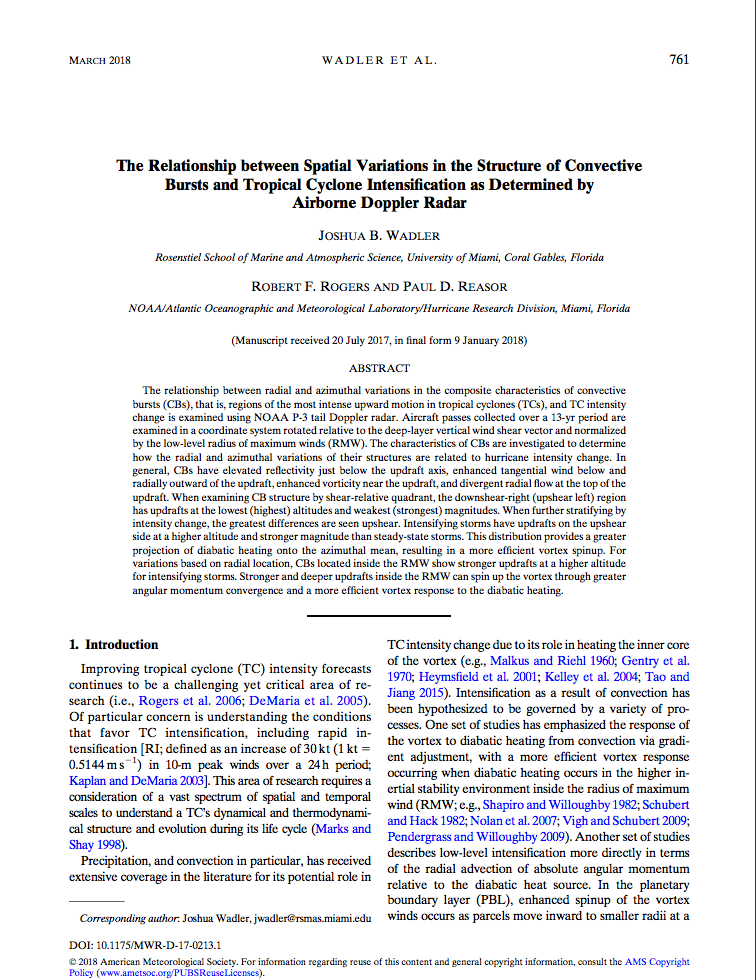Wadler, J.B., R.F. Rogers, and P.D. Reasor. The relationship between spatial variations in the structure of convective bursts and tropical cyclone intensification using airborne Doppler radar. Monthly Weather Review, 146(3):761-780, doi:10.1175/MWR-D-17-0213.1 2018
Abstract:
The relationship between radial and azimuthal variations in the composite characteristics of convective bursts (CBs), that is, regions of the most intense upward motion in tropical cyclones (TCs), and TC intensity change is examined using NOAA P-3 tail Doppler radar. Aircraft passes collected over a 13-yr period are examined in a coordinate system rotated relative to the deep-layer vertical wind shear vector and normalized by the low-level radius of maximum winds (RMW). The characteristics of CBs are investigated to determine how the radial and azimuthal variations of their structures are related to hurricane intensity change. In general, CBs have elevated reflectivity just below the updraft axis, enhanced tangential wind below and radially outward of the updraft, enhanced vorticity near the updraft, and divergent radial flow at the top of the updraft. When examining CB structure by shear-relative quadrant, the downshear-right (upshear left) region has updrafts at the lowest (highest) altitudes and weakest (strongest) magnitudes. When further stratifying by intensity change, the greatest differences are seen upshear. Intensifying storms have updrafts on the upshear side at a higher altitude and stronger magnitude than steady-state storms. This distribution provides a greater projection of diabatic heating onto the azimuthal mean, resulting in a more efficient vortex spinup. For variations based on radial location, CBs located inside the RMW show stronger updrafts at a higher altitude for intensifying storms. Stronger and deeper updrafts inside the RMW can spin up the vortex through greater angular momentum convergence and a more efficient vortex response to the diabatic heating.
View the PDF Article.
